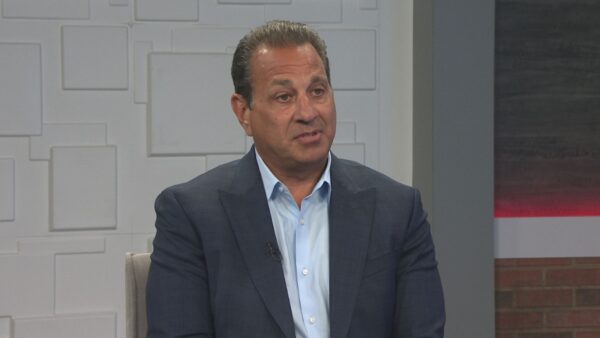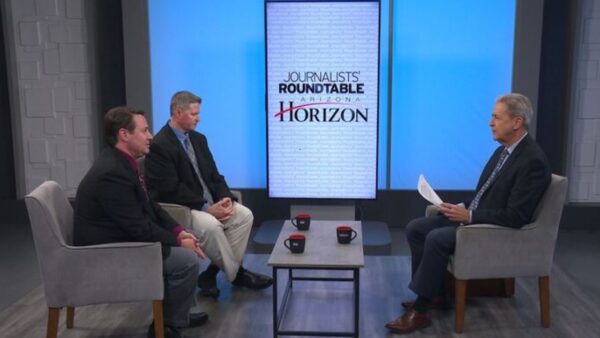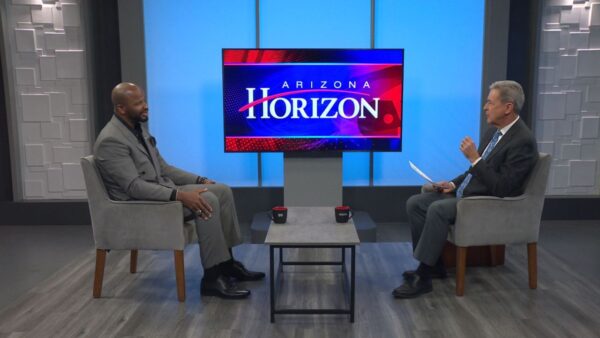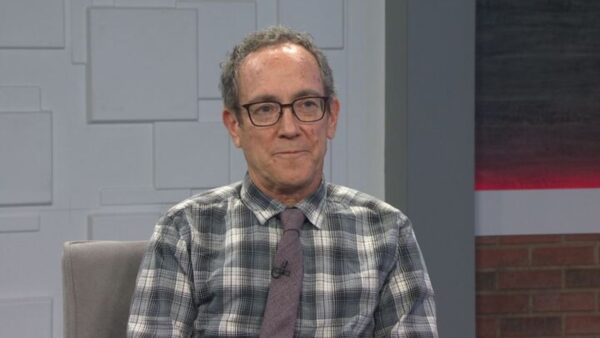The city of Mesa is looking to set up a high-tech corridor on land near the Phoenix-Mesa Gateway Airport and a factory owned by Apple Inc. Mesa City Councilman Scott Somers and Barry Broome, President and CEO of the Greater Phoenix Economic Council, will discuss the proposal for a new high-tech corridor in Mesa.
Ted Simons: Tonight's edition of Arizona Technology and Innovation looks at the city of Mesa's efforts to set up a high-tech corridor near the Phoenix-Mesa gateway airport and Apple's new manufacturing plant. Here with more on the plan is Mesa city councilman Scott Somers, and Barry Broome, president and CEO of the Greater Phoenix Economic Council. Good to have you both here. Mesa -- is this like what they have in Chandler, something similar in Mesa?
Scott Somers: Chandler is certainly an inspiration. They have had tremendous success in that community, we hope to replicated it with all of the advantages we have in the Mesa gateway area.
Ted Simons: Let's talk about exactly where this is. It is out by both Apple and Gateway correct?
Barry Broome: Correct, it's going to be, obviously Price Road set the tone for the advanced industry and manufacturing corridor in the east valley. That is a maturing corridor. We need to continue to drive that kind of investment in the market. This new corridor will take advantage of the Grand Canyon investment that is being made in Mesa. It leverages Arizona State University at Polytechnic, which is becoming a spectacular educational institution. Phoenix Mesa Gateway, juxtaposed between two airports, and hopefully we will get additional opportunities because of Apple's presence.
Ted Simons: I think we have a map here. It is obviously going to be called the Elliott Road Corridor. What is there now?
Scott Somers: What we have right now is tremendous infrastructure assets. We have water, wastewater, sewer. We have dark fiber, available for communications. We have significant infrastructure from SRP in power. And that is one of the biggest assets that we have had to help attract Apple, because companies like that need to have a power supply.
Ted Simons: And, but, again, is this empty land right now? Is this waiting for something to happen here?
Scott Somers: It is shovel ready land. That is what this process is trying to do. And so what we have created is a zoning overlay that matches the vision that Mesa has created over really the past six to eight years to say we want development, but one of the road blocks oftentimes is how long that process takes to go from land through zoning and permitting. We are trying to cut that down, too.
Ted Simons: How much are you cutting that down? How much input are you going to have now?
Scott Somers: Essentially what we're doing, cutting potentially months off of this process by taking this corridor and creating a zoning overlay and what that would say is that if you bring in another Apple or big company, rather than having to go through an entire zoning process, we're going to do that up front, put the zoning in place, and if you bring in this company and match the -- match the vision, all you have to do is sign the paperwork and the zoning is enacted.
Ted Simons: What if I have my eye on the Elliott Road Corridor and I don't match the vision.
Scott Somers: Well, you, as a property owner, you still have the right to go through the zoning process. So, if you want to do big-box stores, you have the right to come to the city council, go through the planning department, come to city council and say this is my vision for this property, and here is why I think it is better.
Ted Simons: These overlay ideas, and getting everyone on the same page for something like this particular industry, how important is that?
Barry Broome: Well, what it does, and in the case of Mesa, a similar model that we used around Eastmark with the DMV development over there. We went from Gaylord, where we were able to convert Apple almost in the same planning exercise. What you want to be able to do with developers, your development partner has to be the right partner. You have to have the right development partners at the table, people like D.L. Withers, east valley, doing good things in that community for a long time, and you want to create a vision around the development. And then you want to give the flexibility for people to make decisions. In the case of Apple, we had, you know, to make decisions on land and variances. We had to deliver permits within six days. What Mesa did with DMV at Eastmark, made it accessible for us to move as quickly as we needed. Timing market issues on development really important in the next three to five years.
Ted Simons: In terms of protecting land out near Gateway, how difficult is that?
Barry Broome: I will tell you, they have done a great job. Mesa has done a great job. We catch a lot of heat, you know, protecting employment centers is really the most important planning objective that should occur within our communities. There is always a temptation to move real estate in a quick turn because there is pressure on people to get returns, but the communities have both a right and a responsibility to maintain the employment corridors.
Ted Simons: We are seeing a map right there. Mesa technology corridor runs east/west there from apple over to the 202. You see obviously the airport, ASU Polytech to the south. Is this basically a natural process now that the price as Barry calls it maturing, but there is probably not a heck of a lot available there and all of the sudden you have Elliott road ready to go.
Scott Somers: Certainly the east valley is growing. Chandler -- eventually that is going to build out. There are going to be more opportunities in Chandler and Tempe as they go vertical in some instances. But really what this is is a realization that this area, which we have dreamed for a long time was going to be a high-growth employment corridor is finally coming into its own with the investment of infrastructure.
Barry Broome: Yeah, and it's overbuilt infrastructure. One of the things that communities do too often, they build their infrastructure too small. What I really like about this corridor is that it is -- it is really overbuilt. It will be able to handle an Apple plant, a TESLA, any kind of infrastructure from a power/water stand point can be met in this corridor. There are also great services coming out of the east valley community. Mesa in particular. Water and sewer, utility folks, are very well respected. SRP, you know, was actually under construction for Apple before Apple closed on the building. So, there is a great infrastructure. It is overbuilt, which we prefer, and there is a mindset to get things done.
Ted Simons: What are homeowners saying in the area? It looked like the height requirement was 150, restriction feet along those lines. Are there many homeowners out there, and, secondly, if there are, what are they saying?
Scott Somers: They're saying that they enjoy the jobs, and, of course, they're looking at the plan to make sure that their home investment is protected. But you have a natural barrier here with the power line, so it creates several hundred feet of buffer between these buildings and those homes.
Ted Simons: Power line to the north, south, east, west --
Ted Simons: Well, it would be to the south of the homes and to the north of the --
Ted Simons: And as far as a time table for this new ordinance, overlay, what are we looking at here?
Scott Somers: Right now we are going to go through the zoning process. The public will have an opportunity to look at it and make comment. So the next few months, we -- we should see it. Probably by September.
Ted Simons: Idea of focusing, last question here, focusing an area on one industry in particular, at least the trending -- is there a danger there? What happens if the next mouse trap is built and all of the sudden we're looking at all of these things that are close to -- you know, little far-fetched there, but can you have too much of the same thing in one spot?
Barry Broome: Well, you can, but, you know, I will give you an example. If you build the infrastructure right and you do the right things -- you know, we had first solar, 1.2 million square foot facility. When the company restructured because of solar demand and other challenges in the industry, one thing that we said to Mesa officials, we have the best piece of infrastructure in the United States, who would have dreamt it would have turned into Apple. Staying in the advanced manufacturing space is always the right strategy, too. And, you know, these industries like to be with each other. They like to be next to each other. They like to share precompetitive relationships around technology and manufacturing processes. You have to commit yourself to it and be disciplined and maintaining the planning and zoning objectives of the corridor.
Ted Simons: Alright, the Elliott Road Corridor. We will keep an eye on that. Good to have you both here.
Scott & Barry: Thank you.
Scott Somers:City Councilman, Mesa; Barry Broome:President and CEO, Greater Phoenix Economic Council;




















